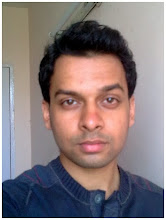In 1997, over $700 billion purchases were charged on credit cards, and this total is increasing at a rate of over 10 per cent a year. At first glance, the credit card market would seem to be a rather concentrated industry. Visa, MasterCard and American Express are the most familiar names, and over 60 per cent of all charges are made using one of these three cards. But on closer examination, the industry seems to exhibit most characteristics of perfect competition. Consider first the size and distribution of buyers and sellers. Although Visa, Mastercard and American Express are the choices of the majority of consumers, these cards do not originate from just three firms. In fact, there are over six thousand enterprises (primarily banks and credit unions) in the US that offer charge cards to over 90 million credit card holders. One person's Visa card may have been issued by his company's credit union in Los Angeles, while a next door neighbour may have acquired hers from a Miami B...


Wonderful Content Thank you for sharing .
ReplyDeleteDemand Funtion